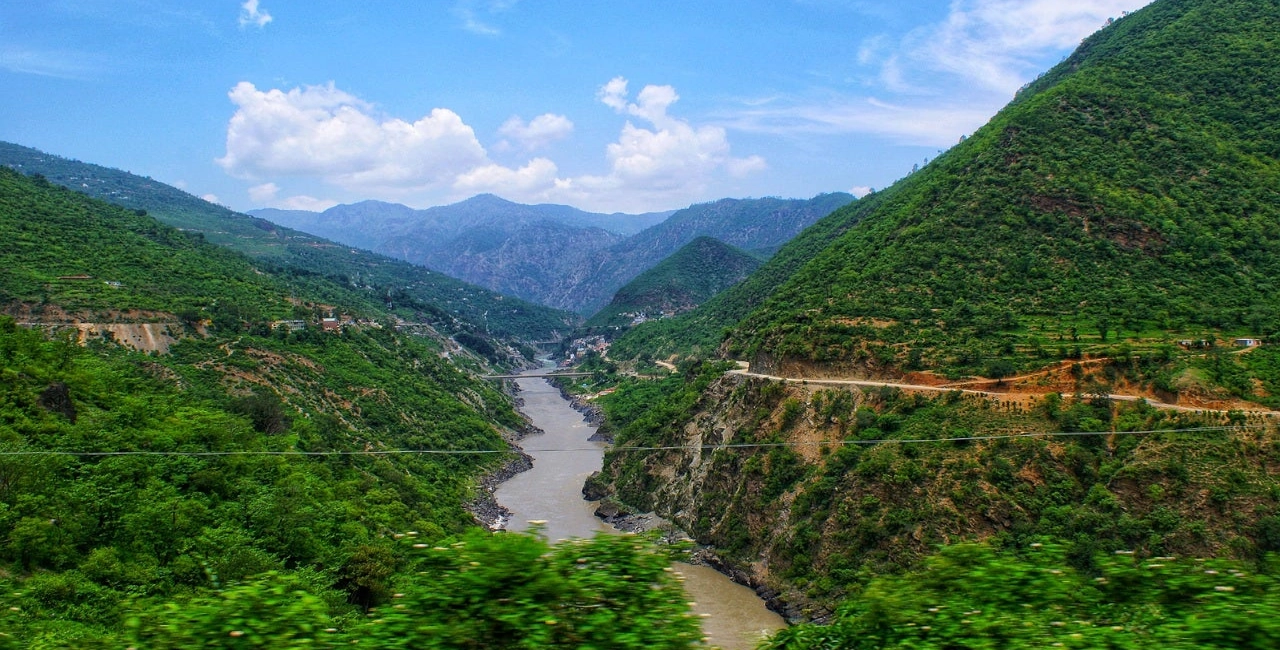Jim Corbett National Park, located in the Nainital district of Uttarakhand, is a celebrated wildlife sanctuary and one of India’s premier destinations for nature lovers and wildlife enthusiasts. Established in 1936 as Hailey National Park, it was later renamed in honor of the legendary British hunter-turned-conservationist, Jim Corbett. The park is not only the oldest national park in India but also the first to come under the Project Tiger initiative in 1973, a key program aimed at conserving the endangered Bengal tiger. With its diverse landscapes, abundant wildlife, and rich history, Jim Corbett National Park is an essential stop for anyone seeking to experience India’s natural beauty.
Geographical Diversity and Landscape
Spanning over 1,300 square kilometers, Jim Corbett National Park is renowned for its stunning geographical diversity. The park is nestled at the foothills of the Himalayas, with terrain ranging from rolling hills and riverine belts to marshy depressions, grasslands, and large lakes. The Ramganga River, a vital water source, meanders through the park, supporting a range of wildlife.
The park’s altitude varies between 1,300 feet (400 meters) and 4,000 feet (1,220 meters), leading to a variety of ecosystems that include dense forests, open grasslands, and shrublands. These landscapes provide a rich habitat for a wide array of flora and fauna, making Jim Corbett a paradise for nature photographers and ecologists alike.
Flora and Fauna
Jim Corbett National Park is home to an impressive variety of plant species. Sal trees dominate the forested areas, along with other vegetation such as khair, haldu, and chir pine. These dense forests not only create a picturesque setting but also serve as a shelter for a vast array of wildlife. The park is divided into different zones—Bijrani, Dhikala, Jhirna, Durgadevi, and Sonanadi—each offering a unique ecosystem.
The park’s most famous residents are the Bengal tigers, which roam the park’s forests and grasslands. It’s one of the best places in India to spot these magnificent creatures in their natural habitat. Jim Corbett’s tiger population is an integral part of the Project Tiger conservation efforts, and the park has played a significant role in the revival of this endangered species.
Besides the Bengal tiger, the park supports a wide variety of mammals, including leopards, elephants, sloth bears, wild boars, otters, and deer species such as chital, sambar, and barking deer. The park is also home to the endangered fish-eating gharial crocodile and the mugger crocodile, which can be seen basking along the banks of the Ramganga River.
Birdwatchers flock to Jim Corbett to observe its incredible birdlife, as the park is home to over 600 species of birds. These include vibrant kingfishers, majestic crested serpent eagles, Himalayan vultures, and the critically endangered white-rumped vulture. The combination of the park’s aquatic habitats and dense forests makes it a prime spot for birdwatching throughout the year.
Safaris and Ecotourism
Jim Corbett National Park offers an array of safari experiences that allow visitors to witness its wildlife up close. Jeep safaris are the most popular and provide an adventurous way to explore the park’s diverse zones. The Dhikala zone, in particular, is famous for its vast grasslands and opportunities to spot tigers, elephants, and deer.
For those seeking a more immersive experience, elephant safaris offer a unique way to traverse the park’s terrain while enjoying close encounters with the park’s wildlife. These safaris are slower and provide a tranquil experience, ideal for observing animals in their natural surroundings without disturbing them.
One of the most sought-after experiences in the park is the overnight stay in the Dhikala Forest Lodge, located deep inside the core zone. This allows visitors to enjoy the wilderness of Jim Corbett during the quieter hours, when the animals are most active. The sense of remoteness and the chance to hear the sounds of the jungle at night make it an unforgettable experience for wildlife enthusiasts.
Jim Corbett is a pioneer in ecotourism, promoting sustainable practices to protect its fragile ecosystems. Strict regulations govern tourism in the park, ensuring that human activities do not harm the wildlife or their habitats. The forest department works diligently to minimize the environmental impact of tourism, and only a limited number of vehicles are allowed in each zone at any given time. This controlled tourism model has helped preserve the park’s rich biodiversity while providing visitors with a responsible and respectful wildlife experience.
Conservation and Challenges
Jim Corbett National Park’s success in wildlife conservation is largely due to its early adoption of protective measures under Project Tiger. The park’s tiger population has shown a healthy increase over the decades, proving the efficacy of conservation programs.
However, the park faces challenges such as human-wildlife conflict, poaching, and habitat fragmentation. As human settlements grow around the park’s periphery, there is increasing pressure on the park’s resources, leading to occasional conflicts between locals and wildlife, especially with tigers and elephants. The park authorities, in collaboration with local communities, work toward resolving these conflicts through awareness programs and by providing alternative livelihoods to reduce dependence on forest resources.
Moreover, climate change poses a long-term threat to the park’s ecosystems. Changes in rainfall patterns and rising temperatures could potentially impact the availability of water and food resources for the park’s wildlife. Ongoing conservation efforts are crucial in addressing these challenges and ensuring that Jim Corbett National Park remains a haven for wildlife.
Conclusion
Jim Corbett National Park is not just a sanctuary for wildlife but a symbol of India’s commitment to conservation. Its diverse landscapes, thriving populations of Bengal tigers and other animals, and its role in the country’s ecotourism efforts make it one of India’s most important protected areas. Whether you are an adventure seeker, wildlife enthusiast, or nature lover, a visit to Jim Corbett offers a remarkable opportunity to reconnect with nature and witness the beauty of India’s wildlife in its most pristine form.


0 Comment